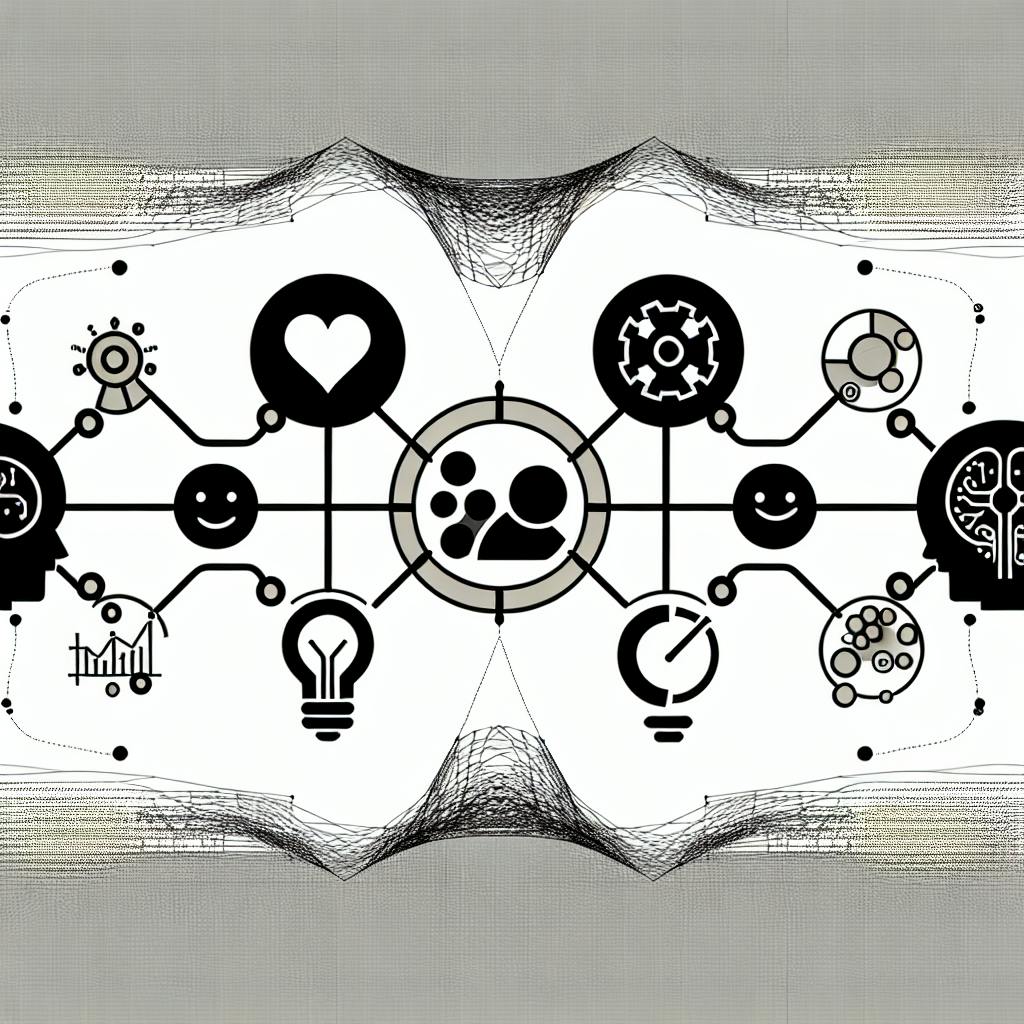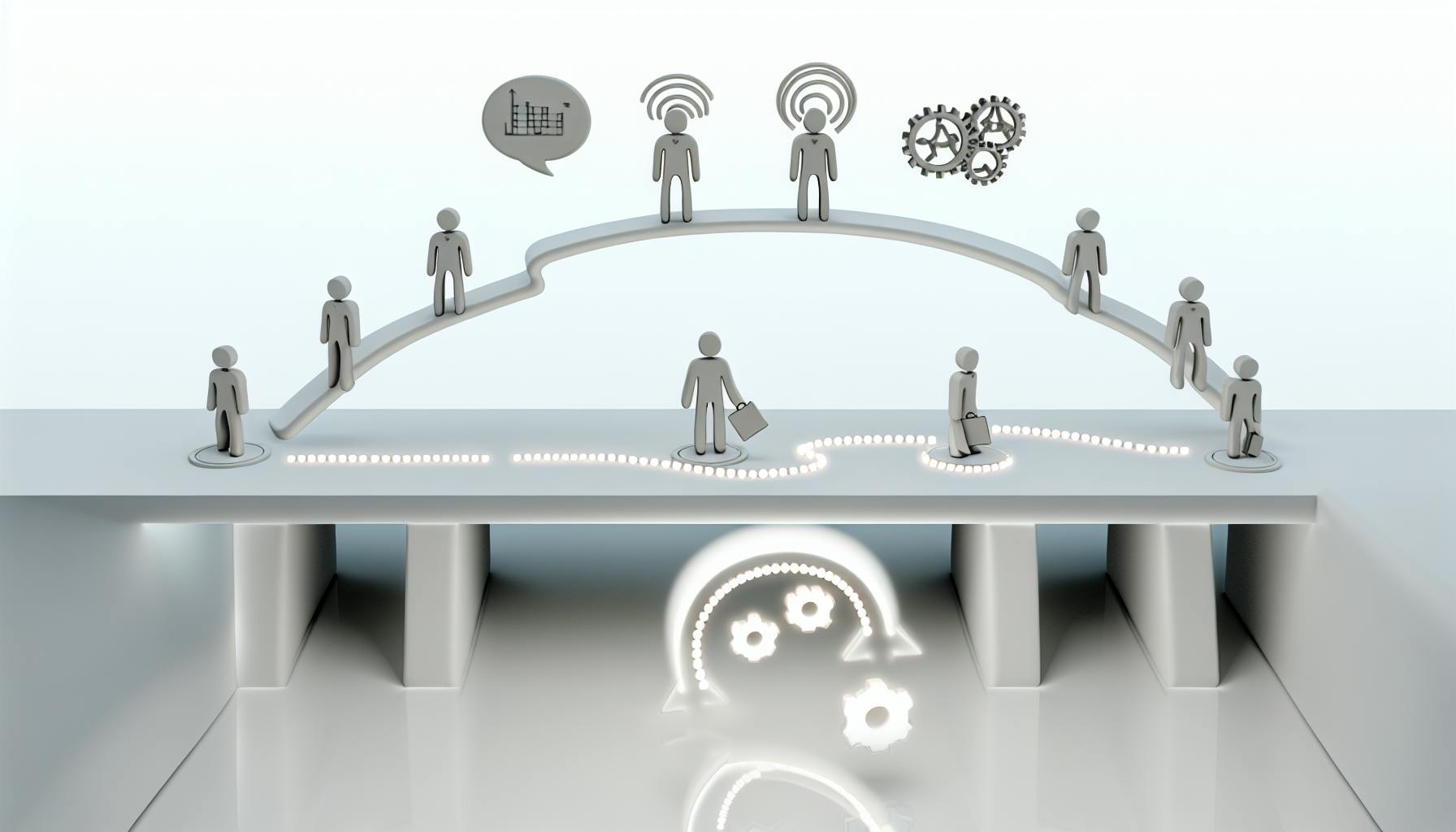Selecting an employee management system is crucial for businesses aiming to optimize HR processes.
This guide provides a framework for evaluating software based on scalability, customization, and support to choose the best system for managing your workforce.
We will explore core criteria like core HR functions, talent management, payroll, and timekeeping to assess comprehensive solutions. You'll get actionable insights on implementation strategies and comparing top providers to make an informed decision.
Introduction to Employee Management Systems
Employee management systems are software solutions designed to help organizations efficiently manage various HR processes related to their workforce. These systems aim to centralize employee information, automate tasks, and provide data-driven insights to empower strategic decision-making.
Understanding Employee Management Systems
Employee management systems, also known as human capital management (HCM) software, refer to technology platforms that consolidate and manage employee data across the entire employment lifecycle. This includes functions like:
- Recruiting and onboarding
- Payroll and compensation
- Time and attendance tracking
- Performance management
- Learning and development
- Benefits enrollment and administration
Core capabilities of these systems include maintaining accurate employee records, streamlining HR workflows, enabling self-service access, providing analytical reporting, and ensuring compliance.
Advantages of Implementing the Best Employee Management Software
Implementing a robust and customizable employee management system offers numerous advantages for organizations:
- Improved efficiency - Automating manual processes saves time and money spent on paperwork. HR staff can focus on more strategic initiatives.
- Centralized data - All employee information and documentation stored in a single system reduces errors and redundancies.
- Informed decision-making - Advanced reporting and analytics provide real-time insights into the workforce to guide talent management.
- Enhanced experience - Intuitive self-service options empower employees and managers to access information and complete tasks.
When selecting employee management software, key evaluation criteria include scalability, configurability, and quality of support services. Assessing these factors helps determine the system most capable of meeting an organization's unique and evolving needs.
Which is the best employee management software?
When evaluating employee management software, it's important to consider factors like scalability, customization, and support services to find the best fit for your organization's needs.
Scalability
Choose a system that can grow with your company. Consider not just current headcount, but projected growth over the next 3-5 years. Some top options to explore include:
- monday.com: Offers plans for teams of all sizes. Scales from small businesses to enterprises.
- BambooHR: Works for companies from 10 employees up to over 1,000 employees.
- Workday: Supports organizations with thousands of employees across the globe. Built to scale.
Customization
Look for custom fields, workflows, permissions, and branding capabilities. This allows tailoring the system to your processes over time. Some highly customizable picks:
- Rippling: Builds customized apps and integrations for your tech stack.
- ClickUp: Features customizable dashboards, fields, views, and more.
- Zenefits: Enables customizing your own HR workflows.
Support
Evaluate setup assistance, employee training, rollout planning, and ongoing support. This ensures smooth adoption and optimization. Notable options with stellar support:
- Paycor: Provides dedicated account manager and 24/7 phone and chat support.
- Workday: Offers employee training courses and change management consulting.
- monday.com: Includes customer success managers to offer guidance.
By evaluating software like monday.com, Paycor, BambooHR, Workday, Rippling, Zenefits, and ClickUp across these key factors, you can determine the best employee management system for your HR workflows and business needs.
What is employee management system software?
An employee management system is software designed to optimize core HR processes and enhance workforce efficiency. It does this by automating administrative tasks and leveraging data analytics for informed business decisions.
Key features of an employee management system may include:
- Recruiting & Onboarding: Streamline talent acquisition with applicant tracking systems, automate onboarding workflows.
- Payroll & Benefits: Manage payroll, tax calculations, 401k plans, healthcare benefits and more.
- Time & Attendance Tracking: Track employee hours worked, schedules, paid time off accruals.
- Performance Management: Set goals, provide feedback, conduct reviews and calibrate ratings.
- Learning & Development: Offer training courses, skills assessments, mentorship opportunities.
- HR workflows: Configure approval chains, document storage, employee self-service portals.
Top benefits of implementing an employee management system:
- Increased productivity: By reducing time spent on administrative tasks.
- Data-driven decisions: Analytics provide actionable insights.
- Scalability: Cloud systems grow with your changing needs.
- Customization: Tailor the system to your processes.
- Mobile Access: Enable employees to access info on-the-go.
When evaluating employee management systems, key criteria include security, support services, ease of use, integration capabilities, and configurability to match an organization's specific requirements.
How do I choose an employee management software?
Choosing the right employee management software is crucial for streamlining HR workflows and improving workforce efficiency. Here are some key things to consider when evaluating options:
Key Features
-
Accessibility: Ensure the software works on all devices (desktop, mobile, tablet) to enable management from anywhere at any time.
-
Scheduling: The ability to create schedules, assign shifts, manage time-off requests. This optimizes staff planning.
-
Task Management: Tools for creating, assigning, and tracking tasks across teams. Critical for productivity.
-
Time Tracking: Automated time tracking lets you monitor attendance, overtime hours, productivity levels.
-
Communication: Collaboration features like group chat and document sharing boosts teamwork.
-
Cost Management: Reporting on labor costs, overtime pay allows smarter budgeting.
Scalability and Customization
Consider current team size but also future growth plans. Scalable software that customizes to your workflows is ideal.
Data and Security
Ensure data encryption, access controls, user permissions to protect sensitive employee information.
Support and Training
Look for 24/7 customer support and thorough onboarding/training resources to ensure smooth adoption.
Evaluating software by features, scalability, security, and support will help determine the best fit for managing your workforce efficiently. Defining must-have capabilities upfront streamlines selection.
What software tool is used to organize and manage employee information?
There are several software tools that can help organize and manage employee information. Some top options include:
Zenefits
- Pricing: Essentials plan starts at $10 per employee per month
- Best For: All-in-one HR solution with streamlined benefits administration
- Zenefits offers a comprehensive platform to manage HR, payroll, benefits, compliance, and more in one integrated system. It automates administrative tasks like onboarding and offboarding.
Rippling
- Pricing: Custom quotes based on company size and needs
- Best For: Automating HR and IT workflows for a seamless employee experience
Rippling centralizes employee data and systems to streamline onboarding, payroll, benefits, device management, and more on a single platform.
Paycor
- Pricing: Custom quotes based on company size and needs
- Best For: Full-service HR and payroll management
Paycor provides dedicated HR specialists and an intuitive dashboard to oversee payroll, time tracking, talent management, and other HR functionality in one place.
The right software for managing employee information depends on the company's size, budget, and specific needs. But options like Zenefits, Rippling, and Paycor offer automation, integration, and expertise to effectively organize HR data.
sbb-itb-d78b90b
Assessing Software for Employee Management Systems
Evaluating the right employee management system is crucial for organizations looking to streamline HR workflows. When assessing options, there are three key factors to consider:
Evaluating Scalability for Growing Businesses
As your business grows, an employee management system needs to scale with it. Consider:
- Number of employees supported: Ensure the software can handle your current and projected future headcount across locations. Most systems work for up to a few thousand employees.
- Integration capabilities: As you add new HR systems, the software should integrate well via APIs without extensive coding. This allows consolidated data and workflows.
- Infrastructure requirements: Cloud-based systems scale easier as vendors handle infrastructure. With on-premise systems, consider hardware/bandwidth needs.
Customization Capabilities for Unique HR Workflows
Since each organization has unique processes, the system should adapt accordingly:
- Configuration options: Assess if you can choose specific modules, fields, workflows etc. without vendor assistance. This allows self-service changes.
- Customization services: Most vendors offer professional services to customize systems more extensively via APIs, scripting, or coding. Evaluate associated time and costs.
- Ease of change: Systems with easy drag-and-drop configuration enable non-technical users to make changes without depending on IT teams or vendors.
Support Services: Ensuring Reliable Assistance
Get clarity on available support during implementation and ongoing usage:
- Onboarding assistance: Look for training programs and dedicated reps to guide your configuration and rollout. Quick ramp-up is crucial for user adoption.
- Accessibility: Evaluate ease of contacting support via phone, email, chat etc. Are there service level agreements for response times?
- Proactive recommendations: Some vendors provide access to resources like ideas for better usage based on benchmarks and best practices. This helps you stay updated.
Selecting software that scales, customizes, and supports as your needs evolve is key to long-term value. Evaluating these aspects upfront ensures your investment meets both immediate and future needs.
Comprehensive Functionality for Workforce Management
An effective employee management system provides HR teams with a comprehensive set of tools to manage the entire employee lifecycle. As organizations grow, it becomes critical to implement scalable solutions that unify data and processes across the following key areas:
Core HR: Organizational Behavior and Data Management
Core HR functionality forms the foundation of any robust system. Key capabilities include:
- Employee record keeping with profiles, org charts, directories
- Customizable permission-based access controls
- Data integration, reporting, and analytics
- Configurable workflows and HR process automation
Such features enable organizations to securely maintain employee data in a centralized database while optimizing HR workflows.
Talent Management and Performance Improvement Plans
Managing talent acquisition and development initiatives is vital for organizational success. Important modules consist of:
- Applicant tracking and recruiting
- New hire onboarding
- Learning management
- Goal setting and performance reviews
- Succession planning
These talent optimization tools empower leadership teams to align individual employee growth with larger business objectives.
Payroll Tools: Streamlining Compensation Processes
Handling payroll smoothly keeps employees happy and focused. Key highlights involve:
- Payroll calculation including bonuses and reimbursements
- Direct deposit or paycard payment processing
- Tax filing and year-end reporting
- Overtime tracking
- Garnishments management
Automating compensation tasks eliminates manual errors while ensuring timely, accurate payments.
Timekeeping and Benefits Administration
Other helpful components for workforce optimization include:
- Time and attendance tracking
- Shift scheduling software
- Total rewards statements
- Customizable benefit plans
- Open enrollment automation
Such capabilities reduce administrative burdens considerably while providing employees transparency into their compensation packages.
In summary, today's cloud-based employee management platforms enable organizations to unify HR data and streamline processes across the employee lifecycle. Core HR, talent management, payroll, timekeeping, and benefits administration are key elements that determine system scalability, configurability, and usability for managing a growing, global workforce. When carefully evaluated, such solutions can drive significant operational efficiencies while delivering a superior employee experience.
Designing the Implementation Strategy
When rolling out a new employee management system, careful planning and execution are key to ensuring a smooth transition. Here are some important factors to consider:
Managing the Change: Employee Adoption and Training
- Communicate early and often about the new system, its benefits, and the implementation timeline
- Involve employees in the process by gathering feedback and addressing concerns
- Offer training sessions and quick start guides catered to different user groups
- Have on-site support during the initial launch to aid adoption
- Incentivize usage by tying performance metrics and recognition to use of the new system
Data Migration: Transferring Information Securely
- Audit existing HR systems and data to identify what needs to be migrated
- Map data between old and new systems to prevent loss or corruption
- Establish validation processes to ensure accuracy after migration
- Develop backup plans in case of any data transfer issues
- Confirm security protocols to protect sensitive employee information
Training and Support: Enriching the Employee Experience
- Create self-paced eLearning modules employees can reference
- Set up a dedicated help resource for employees to submit questions
- Monitor system data to identify areas where more training may be needed
- Conduct surveys to gather employee feedback about the system
- Continually assess usage trends and enhance resources based on needs
Careful change management, secure data handling, and robust training are essential for successfully rolling out a new employee management system. With adequate planning and resources, companies can minimize disruption and help employees thrive.
Selecting the Best Software for Employee Management System
Evaluating and selecting an employee management system can be a daunting task for HR professionals and business leaders. With so many options on the market, it's important to understand the key players and pricing models to determine the best fit for your organization's needs and budget.
Comparing Market Leaders in Workforce Management Software
When examining workforce management platforms, a few vendors consistently rise to the top in market share, reviews, and capabilities:
- BambooHR - Well-rounded HRIS known for intuitive interface, custom reports, and strong support. Pricing starts at $4 per employee per month.
- UKG (Ultimate Kronos Group) - Industry leader in timekeeping with full-suite HCM options. Prices from $12 per user per month.
- SAP SuccessFactors - Powerful for large enterprises with robust functionality. Costs from $8 per employee monthly.
- Workday - Top-rated multi-module cloud HCM suite. Subscription fees start at $100 per employee annually.
Comparing core features, strengths and weaknesses can determine which solution aligns best with your needs. Prioritizing must-have capabilities narrows options. Weighing costs against functionality and scalability indicates value.
Understanding Pricing Models for HR Software
Some common pricing models for HCM systems include:
- Per Employee Per Month - Simple and scales costs with company growth. Ranges from $2 to $20+ per person monthly.
- Per Module - Allows selecting only needed modules. Modules cost ~$2 to $8 per user monthly each.
- Tiered - Sets price bands based on number of users. Cost per user decreases as company size increases.
- Custom Quotes - Large or complex organizations get tailored packages. Pricing transparency varies.
Considering pricing models in tandem with vendor comparisons assists finding affordable software matching organizational requirements as closely as possible.
Selecting optimized human capital management software takes research and analysis, but pays dividends in elevated HR impact, employee experience, and bottom line results.
Conclusion: Finalizing Your Employee Management System Choice
Recap of Essential Evaluation Criteria
When selecting an employee management system, it's important to consider key criteria like:
-
Scalability: The ability of the software to handle your current and future growth needs. Look for systems that can easily scale up as your workforce and processes expand.
-
Customization: Seek platforms that allow customization to match your unique workflows and HR processes. Prioritize systems with flexibility to adapt the software to your needs.
-
Support Services: Choose providers that offer exceptional training, implementation services, and ongoing customer support. This will smoothen onboarding and ensure you fully utilize all software capabilities.
Determining Next Steps in Talent Acquisition and Management
As you evaluate options, focus on:
-
Defining must-have features aligned to your talent acquisition and management priorities - recruitment, onboarding, performance management etc.
-
Comparing solutions against these criteria to determine the best-fit platform for your organizational requirements and budget. Shortlist 2-3 top contenders.
-
Scheduling demos of shortlisted systems to experience firsthand how they address your needs. Ask questions and take notes to facilitate your final software selection.
With clear criteria and a structured selection process focused on organizational priorities, you will be well-positioned to choose an employee management system that enhances HR workflows and delivers value.


